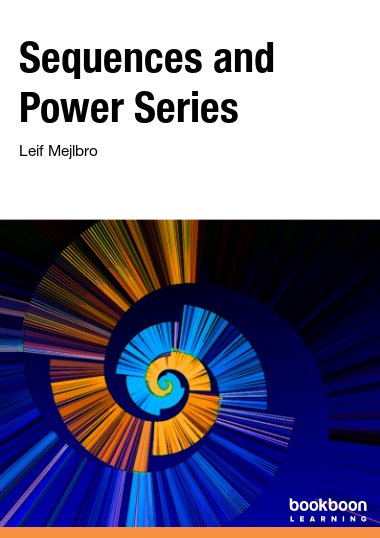A book with 'Guidelines for Solutions of Problems'. The book is in English.

A book with 'Guidelines for Solutions of Problems'. The book is in English.
Here follow some guidelines for solution of problems concerning sequences and power series. It should be emphasized that my purpose has never been to write an alternative textbook on these matters. If I would have done so, I would have arranged the subject differently. Nevertheless, it is my hope that the present text can be a useful supplement to the ordinary textbooks, in which one can find all the necessary proofs which are skipped here.
The text presupposes some knowledge of Calculus 1a, Functions in One Variable, and it will itself be the basis for the following Calculus 4b: Fourier Series, Differential Equations and Eigenvalue Problems. The previous text, Calculus 2b, Functions in Several Variables will only be necessary occasionally.
Chapter 1 is a repetition of useful formulæ – some of them already known from high school – which will be used over and over again. The reader should read this chapter carefully together with Appendix A, which is a short collection of formulæ known previously. These will be assumed in the text without further reference, so it would be a good idea to learn these formulæ by heart, since they can be considered as the tools of Calculus which should be mastered before one can proceed.
The text itself falls into two main parts, 1) Sequences of numbers and functions, and 2) Series of numbers and power series. The more general series of functions occur only rarely in this text. I felt that the main case of Fourier series should be put into a later text, because the natural concept of convergence is not the same as the convergence dealt with here. I have seen too many students being confused by the different types of convergence to let these two main cases clash in the same volume.
Comments, remarks and examples will always be ended by the symbol <>, so the reader can see when the main text starts again.
In general, every text in the Calculus series is given a number – here 3 – and a letter – here b – where
a means “compendium”,
b means “guidelines for solutions of standard problems”,
c means “examples”.
Since this is the first edition of this text, there may still be some errors, which the reader hopefully will forgive me.
Leif Mejlbro
Leif Mejlbro